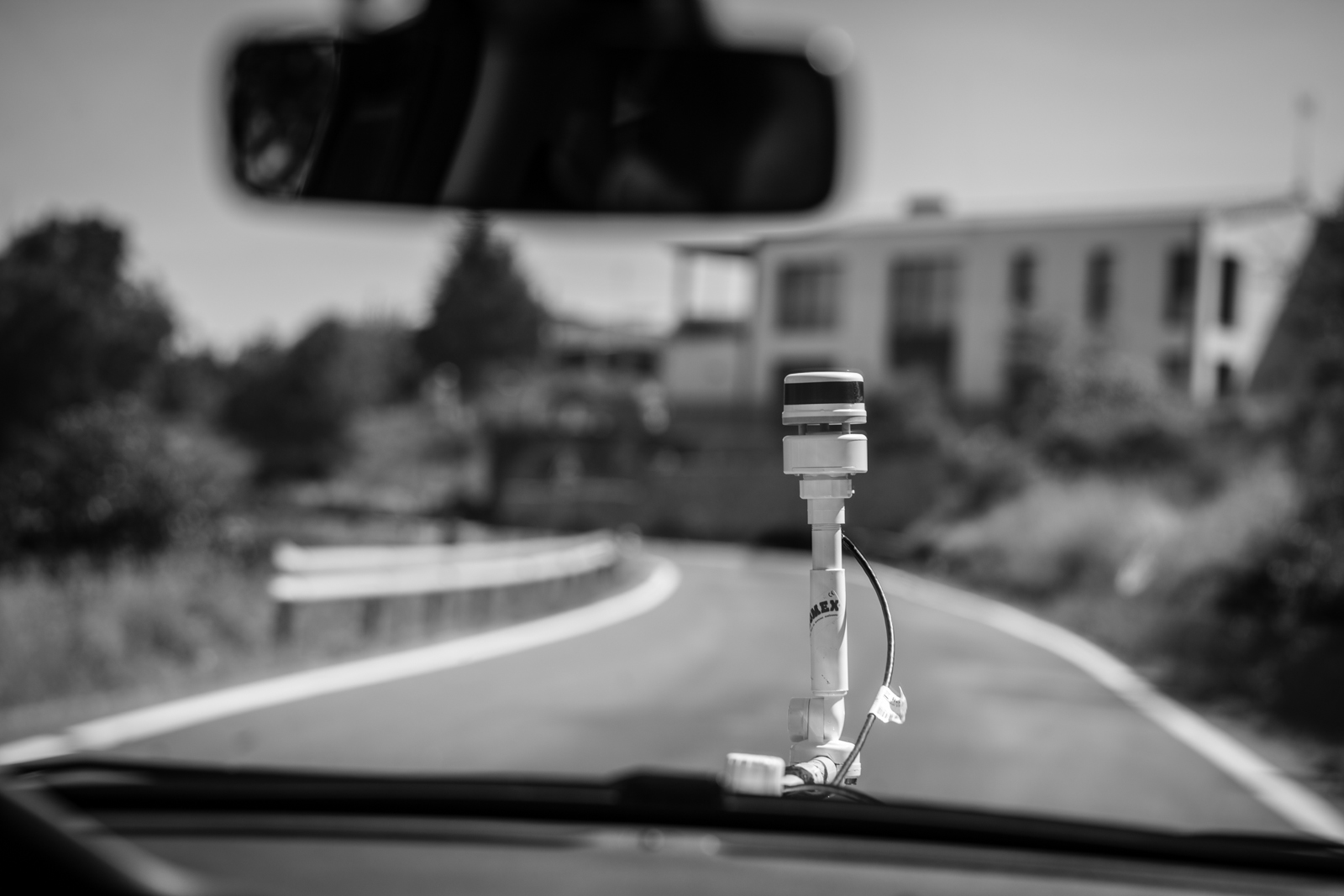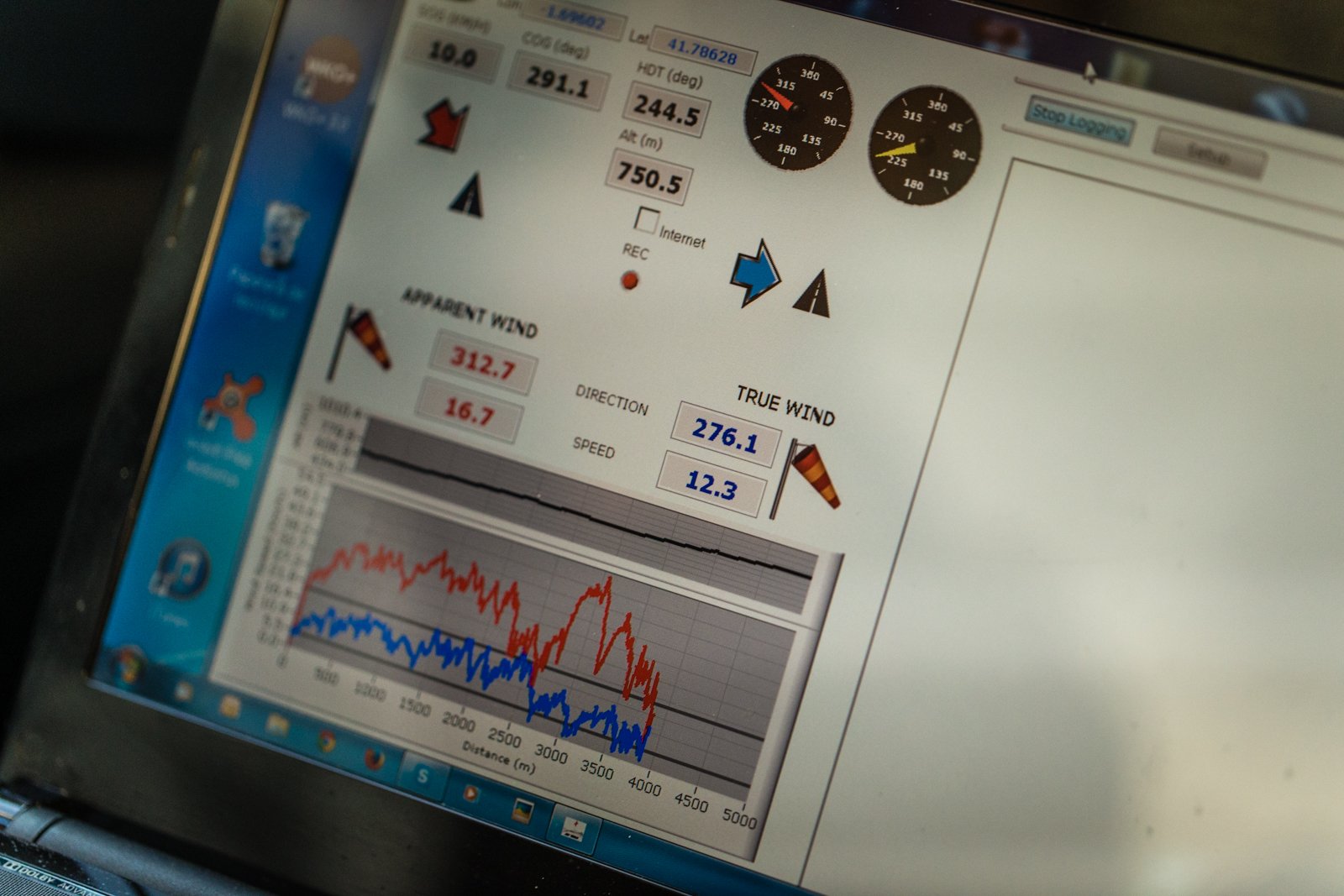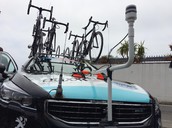Time Trial Preparation
Time trials are often decided by a few seconds. With no shelter from the wind, every weakness equates seconds lost at the finish line. Teams prepare for time trials weeks in advance, by inspecting the course and carefully assessing equipment choice in detail.
This behind-the-scenes story reveals how Specialized Racing contributes to the Etixx–QuickStep Team's preparations, providing both high performing equipment as well as technical assistance.
Once the course details are known, S-Racing staff drives the route with an instrumented car, outfitted with:
1. High-accuracy GPS
2. Ultrasonic multi-direction wind speed sensor
3. Sensors to measure temperature and other environmental factors
4. High-definition camera

Photo: team car with ultrasonic multi-direction wind speed sensor mounted to hood.
The route reconnaissance is carried out multiple times. The initial run is conducted far in advance, to assess the potential weather conditions forecasted at the race time. The final recon is held as close as possible to the time at which the race will start.
To connect all the sensors, GPS, multi-direction sensor, and so on, the staff relies on a computer placed inside the car. The computer links all the data collected, creating a very precise map, assessing all the variables in one place.

Photo: laptop inside team car with landing page for all data.
Once the course survey is finished, S-Racing runs several computer simulations of the race route to determine the best equipment and pacing strategy for the team. The simulations are fed with data generated earlier in the year, captured at the track and "Win Tunnel" tests run in the labs in Morgan Hill, and the expected power output for the athlete.
During these race reproductions, different scenarios are considered and simulated. A crucial feature is that the team can see how different choices can negatively or positively affect race results, such as:
Over- or under-pacing a part of the course Change in wind conditions Using a different equipment
For example, Etixx-QuickStep uses Vision wheels for a time trial, which are available in a variety of depths; further, there is a three-spoke for the front and a disc for the rear. While high profile wheels are more aerodynamic, especially in stronger side winds, they are typically heavier with higher inertia, and can be more of a challenge to handle in crosswinds. S-Racing can help eliminate poor choices and uses scientific data to suggest the right height of a wheel profile, the right tire and so on. Aside from the data itself, S-Racing has a good understanding of what the directeurs sportifs need, and which choice will suit which individual athletes.
At the end of the two processes, inspection and simulation, S-Racing turns raw data into valuable information. Then it's up to the team's decision-makers to incorporate the data as well as riders' feedback in the final selection.
















